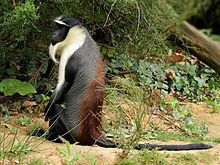Genus Cercopithecus Higher classification Guenon | Phylum Chordata Family Cercopithecidae Scientific name Cercopithecus roloway Rank Species | |
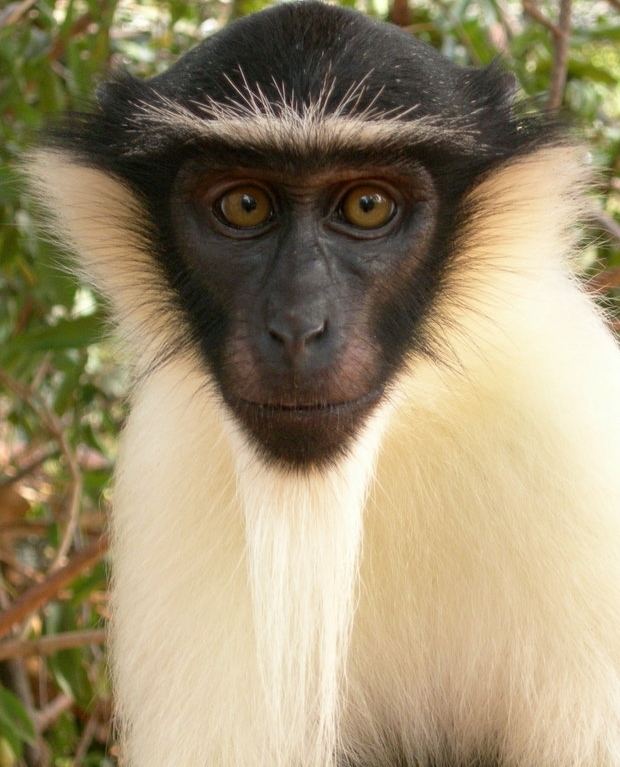 | ||
Similar Primate, Guenon, Diana monkey, Lowe's mona monkey, Sclater's guenon | ||
Roloway monkeys grooming
The roloway monkey (Cercopithecus roloway) is an endangered species of Old World monkey endemic to tropical West Africa. It was previously considered a subspecies of the Diana monkey (C. diana). It is classified as Endangered due to habitat loss and continued hunting for the bushmeat trade.
Contents
- Roloway monkeys grooming
- Playful roloway monkeys
- Taxonomy
- Description
- Distribution and habitat
- Diet
- Social habits
- Conservation
- References
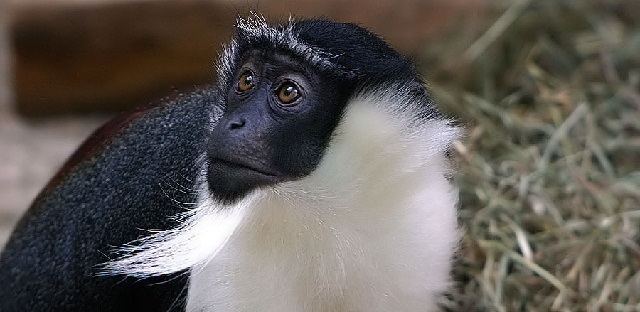
Playful roloway monkeys
Taxonomy
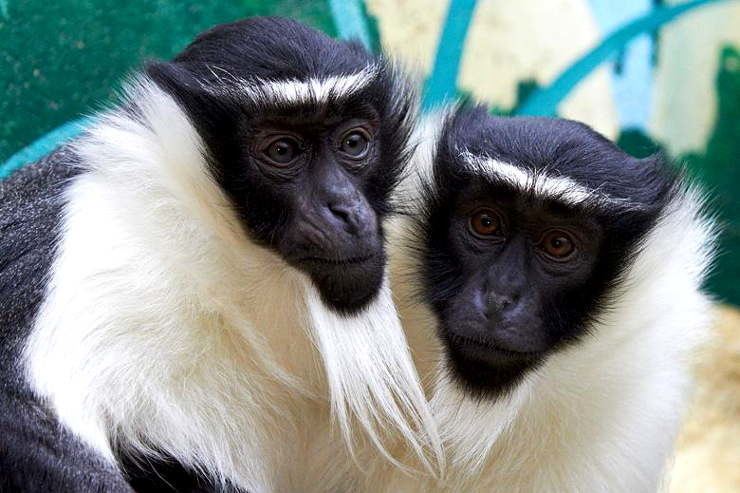
C. roloway and C. diana were previously considered related subspecies (C. diana roloway and C. diana diana), but were classified into separate species in 2005.
Description

The roloway monkey is similar to other species of guenons. Like its closest relative, the Diana monkey (C. diana), its face and much of its fur are black, but is distinguished by its lengthy beard and broader diadem-like browband. It has a white beard, chest, and throat; there are a white stripe along each thigh and a deep reddish or orange patch on its back. On the inside of the thighs, the fur is whitish, yellowish, or reddish. The body length ranges from 40 to 55 cm, with a tail of 50=75 cm. Its weight is between 4 and 7 kg.
Distribution and habitat
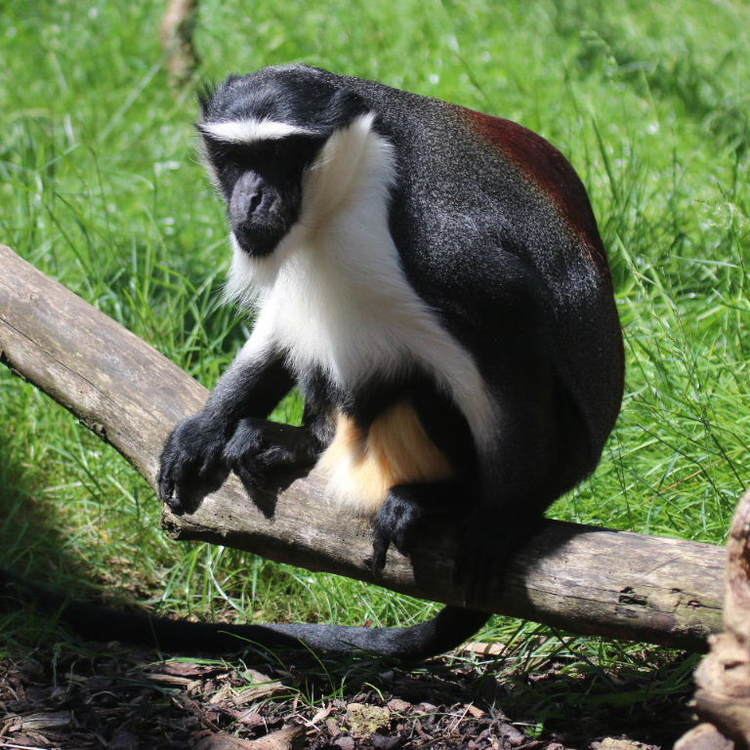
The species occurs in a small area of eastern Ivory Coast and the forests of Ghana, between the Sassandra and Pra Rivers. It may possibly occur in Burkina Faso and Togo. It inhabits the canopy of old-growth forests, including gallery forests, in moist-low-lying regions, and avoids but can make use of forests that have been lightly logged.
Diet
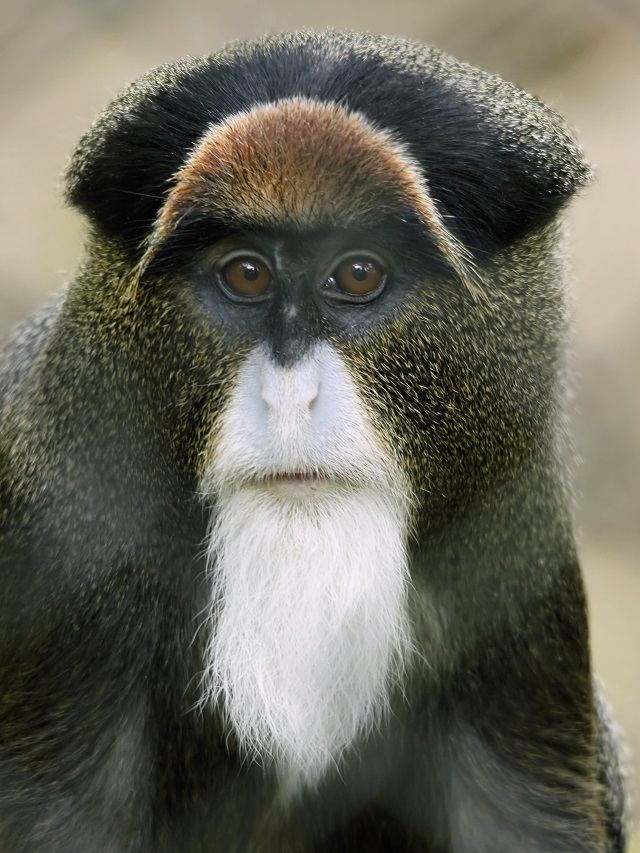
Roloway monkeys consume a diverse array of varying insects, fruit, seeds, and flowers. They can feed on the plant parts of roughly 130 species of trees, climbers, and epiphytes. Like many omnivores, roloway monkeys also consume mature fruit pulp, arthropods, oil-rich seeds- and young leaves.
Social habits
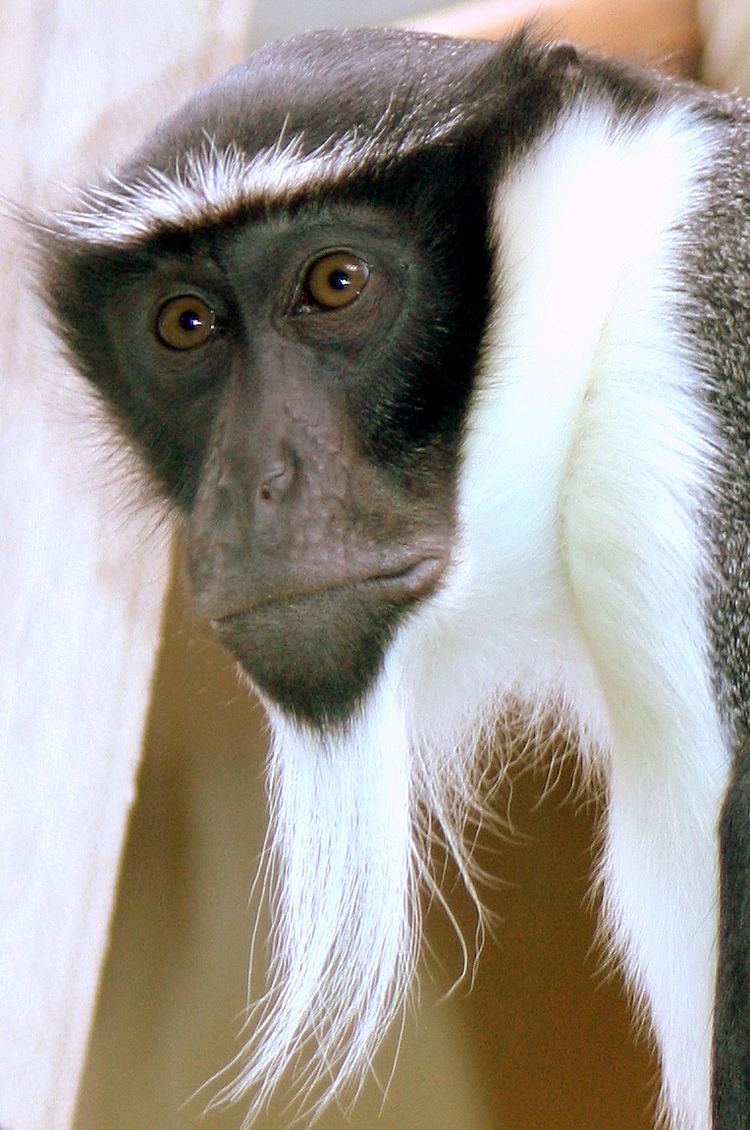
Roloway monkeys typically diurnally active only, and spend the night sleeping high in the canopy. The species forms social groups of 15-30 individuals, typically with a single male, around 10 females and their children. Males may change between groups, while females generally stay with the same group they were born into, a habit that may impose restrictions on the recovery of the species in areas where populations have been reduced. Females give birth typically to one child at a time, after a gestation period of around 5 months. The life span of a roloway monkey is about 20 years in the wild, while individuals in captivity live for more than 30 years.
Conservation

The roloway monkey has been classified as Endangered by the IUCN due to rapid population declines over the last few decades (50%-80%+), mostly driven by habitat loss and hunting. Thes species is among the most threatened primates on the African continent, although exact figures for the species are not available. Recent surveys could not find evidence of it in Ghana's Bia National Park, where it was probably eliminated between the mid-1970s and 1990.
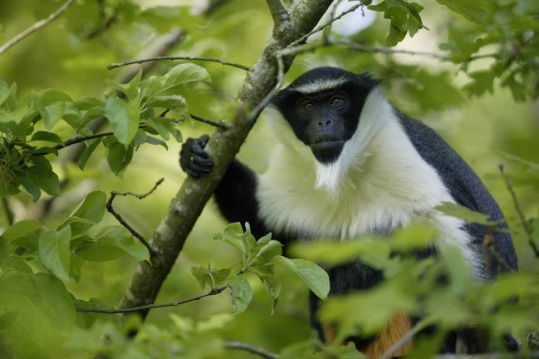
The old-growth forest habitat required by the species continues to be reduced by large-scale deforestation through logging and agricultural conversion. In addition to predation by natural enemies such as crowned eagles, leopards, and chimpanzees, roloway monkeys are also frequent targets of human hunting for the bushmeat trade. Over 800 tons of bushmeat is sold in Ghana's markets every year. The roloway monkeys’ conspicuous colours and loud calls make them very susceptible to hunting. Their habitat is also becoming increasingly fragmented due to a decline in forest habitats and deforestation as human settlements expand and farming increases. In the past 100 years, Ghana has lost 80% of its forested lands. The species is listed as one of "The World's 25 Most Endangered Primates".
